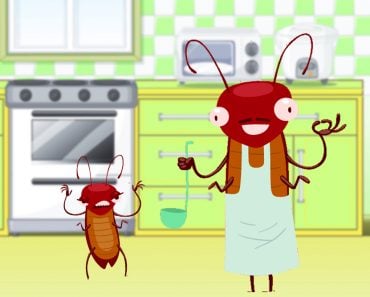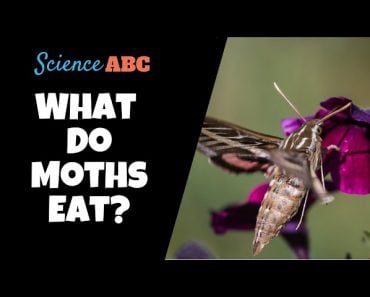Table of Contents (click to expand)
Scientists have found one species of spider, the jumping spider, that does produce milk. They secrete milk from an opening in their abdomen. The milk is necessary for a baby spider’s survival, a piece of evidence that may require us to rethink how we classify lactation in animals.
Nurturing young ones with milk is one of the characteristic features of mammals. Mammalian glands and their secretions help provide all the essential nutrients that aid in the proper development of growing offspring. This process of producing milk is known as lactation, and is seen in all mammals.
Non-mammalian species tend to lay eggs that contain all the nutrition the developing offspring requires. Once the young one hatches, usually parents (if they’re still around) will give them chewed-up food. Milk doesn’t come into the picture.
However, as it so often happens is in the animal kingdom, some animals are an exception to this trend. One such species is the Toxeus magnus spider, more commonly known as the the jumping spider.
This little spider has a huge secret, and all it takes to spill the milk is a gentle abdominal squeeze. Oozing out of its egg-laying opening is the “milk” that an adult Toxeus magnus spider feeds its offspring.
Recommended Video for you:
What’s So Special About The Milk-producing Spider?
One look at, Toxeus magnus, the jumping spider, and you would immediately be reminded of a black ant. This clever disguise saves it from aggressive spider-attacking ants. Incidentally, it is one among nearly 300 spider species that mimic the appearance of ants. One look at the spider and its babies’ behavior and it may remind you of pups running to their mother for milk.
In general, young or developing jumping spiders don’t go scouring for food until they’re old enough to fend for themselves. After hatching, the spiderlings remain in the nest for about 30 days. They keep close to their mother for about 20 days, displaying a behavior similar to a teat-sucking child. The spiderlings attach to the abdomen of their mother, trying to suck in the milky goodness that she exudes.
The mother lays anywhere between 2-36 eggs in one go. Upon hatching, these babies explore their nests in an attempt to find their mother’s milk. Upon closer examination (and a little probing), scientists from the Chinese Academy of Sciences and Hubei University saw a whitish-yellow substance coming out of the spider. They noticed this bizarre behavior and decided to look into it.
After the spiderlings hatch, the mother feeds them for up to 20 days. After this period, these young ones venture out to look for their own food; however, being unaccustomed to foraging, they still partially depend on the milk until they’re close to a month-and-a-half old. The mother guards the nest and passes away not long after the young have left it.
What’s In The Milk?
To be classified as milk, the exudate must contain a variety of substances, including lactose (milk sugar), protein (casein and whey), minerals, and certain vitamins. Although the Toxeus magnus’s secretions don’t really contain lactose, the main components of the milk still include sugars, lipids, and proteins.
Some bioactive substances, similar to those found in mammalian milk, are also present. These can include immunoglobulins, antibacterial peptides, antimicrobial proteins, oligosaccharides, and lipids that can facilitate the growth and proper development of the juveniles. Additionally, it was established that this spider milk has almost four times as much protein as cow’s milk. Fats and sugars are also present in higher quantities than are found in normal cow’s milk.
Do The Spiderlings Need The Milk To Survive?
The milk definitely provides the young spider with the necessary nutrients to aid in their growth, making them strong enough to survive on their own. Since they have to venture out to forage at a later age than most spiders, they’re safe from being preyed upon. However, all these could simply be additional benefits, rather than essential to the spider’s survival.
To understand just how valuable the milk is to the young, the scientists cut the milk’s access to the young ones by blocking the birth canals that secrete the milk. All those young spiders that had not crossed the 20-day mark did not make it out alive. This suggested that the milk played a key role in their survival.
The older ones survived, but did not fare too well. Their growth slowed down, and the lack of milk increased their chance of dying before they reached maturity. Orphaned spiders survived for 10 days, whereas spiderlings that were milk-fed lived for about 76 days.
How exactly the milk is made remains a mystery. Scientists think that it may be a product of some of the unfertilized eggs of the mother.
How Special Is The Jumping Spider’s Behavior?
The jumping spider isn’t the only non-mammal that produces what scientists have dubbed “milk”. Some birds feed their young with “crop milk,” which is semi-digested food with additional secretions from the parent’s digestive system. That said, this isn’t milk produced by the body, like we see in the jumping spider.
A few other insects produce “milk” as well. For example, during the prenatal stage, tsetse flies and cockroaches will either nourish the larvae or developing embryos with nutritional milk-like fluids.

If other insects show such similar traits, then what is so noteworthy about the jumping spider’s milk production? Well, what’s unique about the jumping spider and its milk isn’t necessarily the milk, but the behavior.
In the cases of cockroaches and tsetse flies, there is no behavioral connection between mother and offspring. Jumping spiders, on the other hand, show a relationship between mother and the young. This may imply complex social interactions, like learning. It is this behavior, one that so closely resembles mammalian behavior, that is fascinating to scientists.
References (click to expand)
- Capuco, A. V., & Akers, R. M. (2009). The origin and evolution of lactation. Journal of Biology. Springer Science and Business Media LLC.
- Chen, Z., Corlett, R. T., Jiao, X., Liu, S. J., Charles-Dominique, T., Zhang, S., ... & Quan, R. C. (2018). Prolonged milk provisioning in a jumping spider. Science, 362(6418), 1052-1055.
- Dong, B., Charles-Dominique, T., Corlett, R. T., Quan, R. C., & Chen, Z. (2019). The uniqueness of spider lactation in arthropods.
- Jumping Spiders Nurse Offspring Nearly to Adulthood. American Association for the Advancement of Science
- A Jumping Spider's Story (Family Salticidae) - Field Station. Consin–Milwaukee
- MJ Gillespie. (2012) Functional Similarities between Pigeon 'Milk' and .... National Center for Biotechnology Information
- Spider moms spotted nursing their offspring with milk. Science
- Wiggins, W. D., & Wilder, S. M. (2022, July 29). Carbohydrates complement high‐protein diets to maximize the growth of an actively hunting predator. Ecology and Evolution. Wiley.












